What Is Kimchi? Ultimate Guide to the Korean Cuisine Staple
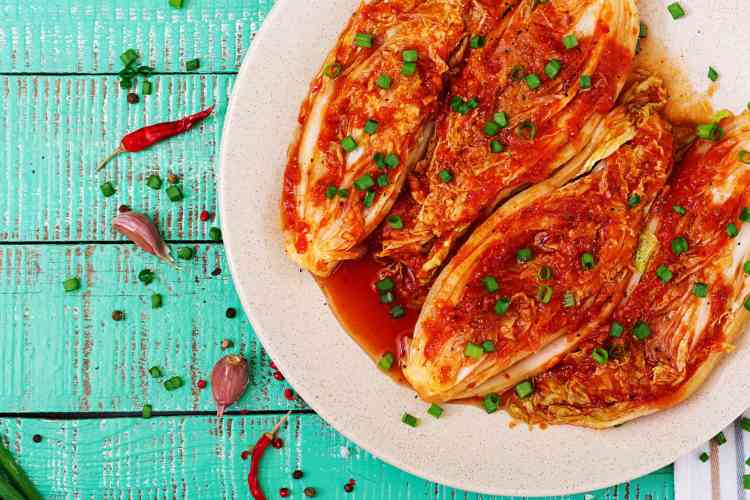
Kimchi has been a staple food of Korean cuisine for generations, with mentions of the dish dating back centuries. This fermented side dish of vegetables and spices is served alongside nearly every meal in Korean households at home and abroad. The dish holds a special place for many Koreans as a comfort food as well as a way to connect with Korean identity and heritage.
With a long history of sustaining Koreans through harsh winters and difficult times, kimchi is one of those rare dishes that transcends its role as a humble side dish and has become an icon of Korean culture and cuisine.
What is kimchi, and what does kimchi taste like? With hundreds of different types in existence, the taste of kimchi varies dramatically based on how it's made and what is in it.
Jump to Section
- Get a Taste of Traditional Korean Foods
- What Is Kimchi?
- What Does Kimchi Taste Like?
- How Is Kimchi Made?
- Is Kimchi Healthy?
- Is Kimchi Spicy?
- How To Make Kimchi
- How To Store Kimchi
- More Ways To Eat Kimchi
- Our Favorite Recipes That Pair Well With Kimchi
Get a Taste of Traditional Korean Foods
Exploring a country’s cuisine is one of the best ways to learn about its history and culture. Why not get a hands-on lesson in Korean cooking classes near you and learn all about kimchi-making from world-class chefs?
From Korean cooking classes in San Francisco to Baltimore and beyond, there are options across the U.S. and further afield to choose from. With interactive online Korean cooking classes, you can even discover this vibrant cuisine from the comfort of your own kitchen.

What Is Kimchi?
Most people probably recognize kimchi as the spicy, bright red cabbage found in a jar in the produce section of the grocery store next to the sauerkraut. Kimchi is a traditional, fermented vegetable dish originating in Korea — a tangy and complex accompaniment eaten morning, noon and night.
The most widely recognized version outside of Korea is made with napa cabbage, brined with salt and other seasonings such as garlic, ginger, green onion and the bright red Korean chili powder gochugaru, which gives the dish its distinctive red hue.
Other types of kimchi are commonly made with ingredients such as Korean radishes, cucumber or the addition of fresh or fermented shrimp or anchovies.
With so many varieties made from different vegetables and seasonings, kimchi could be considered more of a method than one distinctive dish. So if you’re asking what kimchi is made of, the answer depends on which type of kimchi you are referring to.
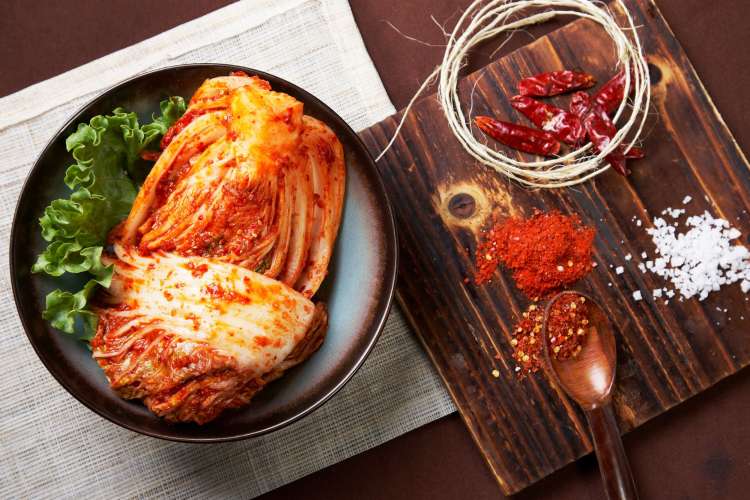
Kimchi’s History and Cultural Significance
Kimchi has been around for centuries, with references dating back to the Three Kingdoms era in Korea from 57 B.C. to around 7 A.D. As a way of preserving vegetables, the kimchi was buried deep in the ground in earthenware pots called onggi.
This kept it cool through the summer and prevented it from freezing during the winter. These traditional pots are still used by some families, but many modern Korean households have a special fridge to store their kimchi.
The original dish was believed not to be spicy due to the absence of chilies in historic recipes. It is speculated that the signature chile powder was added around the 17th or 18th century after Portuguese traders coming from the Americas introduced it to the region.
Traditionally, preparation of the dish occurred in the autumn and was a social event shared among the community to ensure each family had enough food to sustain them through the harsh winter. In fact, one reason the napa cabbage version of kimchi may have become so ubiquitous is because of its seasonality.
As an autumnal vegetable, napa cabbage grows prolifically in the fall and is readily available to transform into kimchi right before winter starts to roll in. The hearty cabbage also offers plenty of surface area to distribute the spice paste and holds its texture well over time.
Modern kimchi is an integral part of daily life in Korea, with each family having their own recipe. For many, this staple dish carries cherished memories and is laced with social nuances embedded in Korean beliefs and practices. The tradition of making kimchi has even been inscribed by the UNESCO Representative List of the Intangible Cultural Heritage of Humanity for its significance to Korean heritage, identity and family customs.
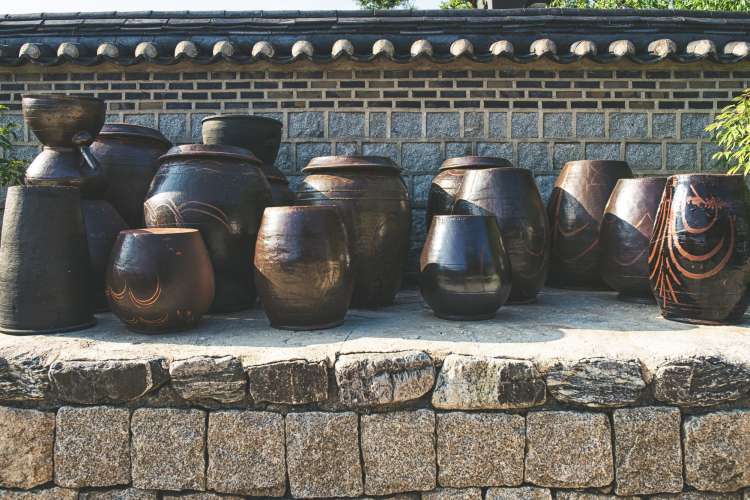
What Does Kimchi Taste Like?
The taste of kimchi is rich and complex but depends on a number of factors, from the ingredients used to how long it has been fermenting. The fermentation process gives kimchi its sour, salty and umami flavors as well as a sharp acidity. Other tastes, such as sweetness and tanginess, come through while chewing the vegetables.
The flavor of the kimchi will also vary the longer it stays in the fridge as it continues to ferment, with ingredients such as garlic intensifying over time. The use of bold seasonings like gochugaru and, in some regions, salted seafood, offers additional layers of complexity to the overall taste of the kimchi.
With seemingly endless options for what’s in kimchi, it is an incredibly diverse dish that can be made to suit nearly any palate, preference or dietary need.
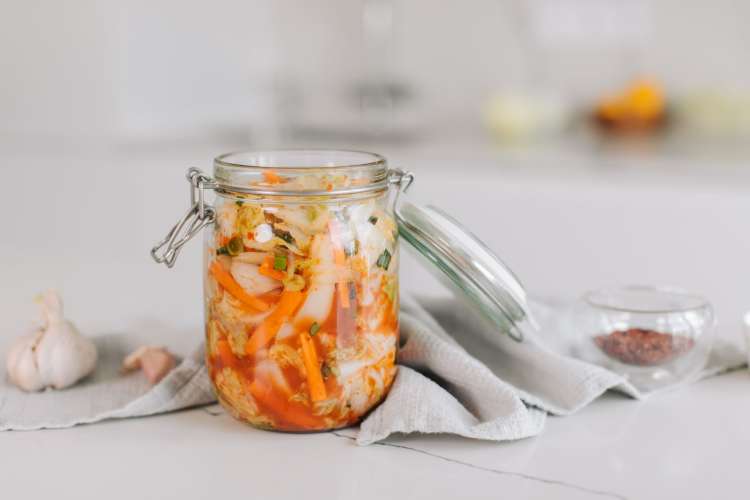
How Is Kimchi Made?
The process used to make kimchi is called lacto-fermentation and includes brining, seasoning and fermentation.
The first step in preparing kimchi is to thoroughly salt the vegetables, allowing the salt to draw out the water to create a brine. A paste of seasonings such as ginger, garlic, gochugaru and fish sauce then coats the vegetables before the ingredients are transferred to the jar or container for fermentation. The vegetables should be packed firmly with the liquid covering the top to help prevent molding.
In the first stage of the fermentation process, the salty brine kills harmful bacteria, enabling good bacteria, called lactobacillus, to survive. In the second stage of the fermentation process, the lactobacillus converts sugars present in the vegetables into lactic acid, which preserves the vegetables and gives the dish its distinctive aroma and tanginess.
After several days of fermenting at room temperature, if bubbles appear at the top of the kimchi when pressed down, the kimchi has fermented properly and is ready to be transferred to the refrigerator, where it will continue to ferment, but more slowly.
Making fermented foods might seem intimidating, but the process is actually fairly simple. It does, however, require time and patience. Making kimchi is a tactile experience that is both immersive and rewarding. Much like making bread or growing a garden, putting in the time and effort to create a beautiful final product often enhances the enjoyment and appreciation of the dish.
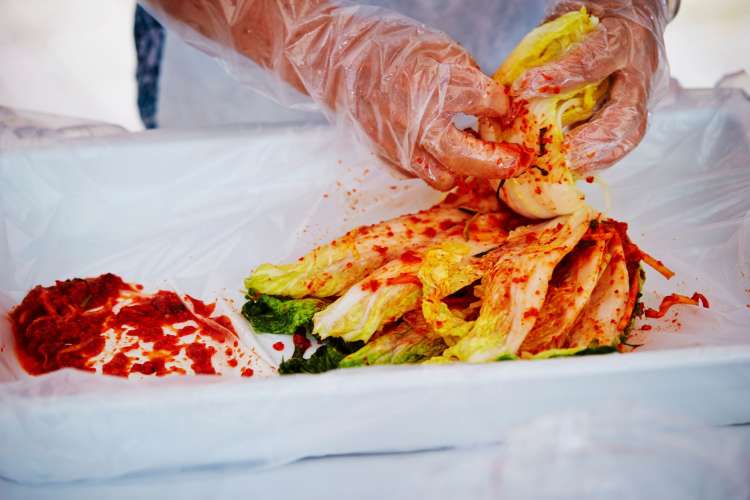
Is Kimchi Healthy?
Kimchi provides your body with both probiotics and prebiotics simultaneously, which is beneficial for gut health. Kimchi has lots of fiber from cabbage, which helps good bacteria grow (prebiotic). When it ferments, it makes more of these good bacteria (probiotics). Kimchi is also an excellent source of Vitamins A and C, with 100 grams of the dish providing around 18% of the daily value for both vitamins.
For those following a low-sodium diet, however, it is important to be aware that kimchi, due to its preparation method, is considered a high-sodium food. One hundred grams of kimchi contains roughly 670 milligrams of sodium, so enjoyment of kimchi in moderation is the ticket for anyone who needs to watch their sodium. Another option, one often taken by Korean people wishing to reduce their sodium intake, is to rinse the kimchi in water before eating it.
In general, the combination of nutrient-rich vegetables with the helpful microbes found in fermented foods is why many consider kimchi to be very good for the gut and overall health.
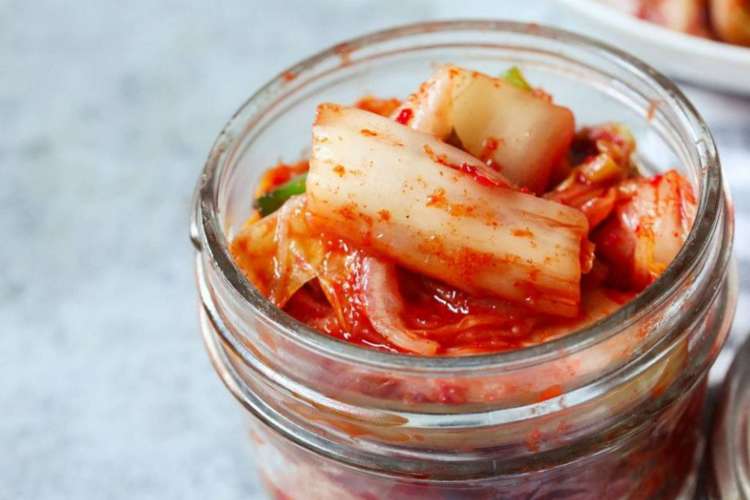
Is Kimchi Spicy?
The bright red color of kimchi’s signature seasoning, gochugaru, leaves many asking, "Is kimchi spicy?" The spice level of the kimchi depends on how much gochugaru went into the mix, with different versions available ranging from mild to very spicy.
The addition of other vegetables to the seasoning paste, such as carrots, daikon radish or green onion, may also help balance the spice level of the dish. Another factor in the spiciness is the length of time the kimchi has fermented.
Baek kimchi or white kimchi is a variation of kimchi that is made without gochugaru and is not spicy at all. And those interested in exploring different types of kimchi might try kkakdugi, a type of kimchi made with cubed radishes, or oi sobagi, a quick cucumber kimchi that is popular in the summer months.
With hundreds of styles of kimchi to choose from, there is sure to be a version with the perfect balance of sour, sweet, spicy and umami to please every palate.
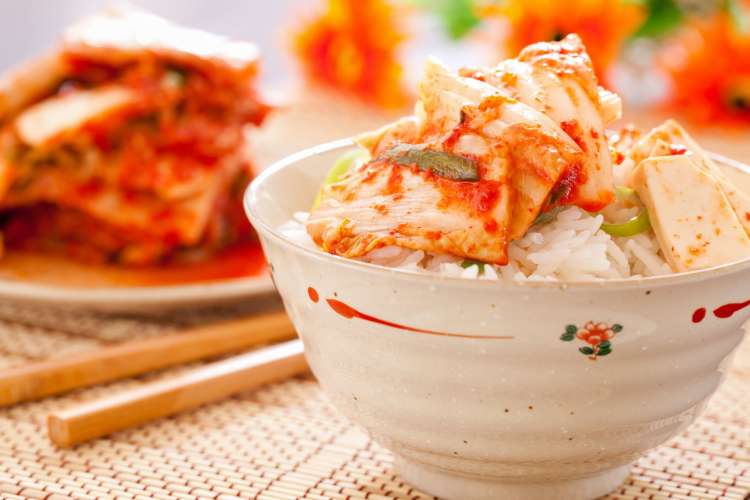
How To Make Kimchi
Making your own kimchi takes time — generally, the longer the kimchi ferments, the better. Some people find that making kimchi isn't as difficult as they expected, while others have the opposite experience. How your kimchi-making goes largely depends on the recipe you choose to work with. Kimchi recipes range from traditional to ultra-modern, so there's bound to be one to suit your tastes and needs.
Here are some of the best:
- All Recipes: This vegan recipe for kimchi calls for a ripe persimmon, but an apple makes an acceptable substitute. It's not exactly traditional, but it's easy, adaptable and produces a tasty kimchi.
- My Korean Kitchen: Sue's kimchi recipe calls for brining the Napa cabbage for six hours first. This recipe includes more traditional ingredients like gochugaru (Korean chili flakes), Korean fish sauce and saeujeot (salted fermented small shrimps), but there are more accessible and/or vegan substitutions provided. (We're definitely sticking with the traditional, though, for the utmost in flavor!)
- Cotter Crunch: This recipe for an Asian Southwest fusion kimchi is the perfect example of how the addition of a single ingredient can add an entirely new sphere of flavor to a traditional dish.
How To Store Kimchi
Because it is a fermented dish, kimchi is naturally well-preserved, with a long shelf life in the right conditions. Over time, the flavors of the kimchi will intensify, becoming more pungent and complex, while the vegetables may lose some of their crispness. The vegetables should be kept submerged under the brining liquid to help keep them crunchy and fresh for longer.
- Homemade Kimchi: Once homemade kimchi has completed the initial few days of fermentation, it should be stored in the refrigerator so it does not continue to ferment too quickly and can be kept for several months or more.
- Store-Bought Kimchi: This should also be stored in the refrigerator and can be kept for around six months.
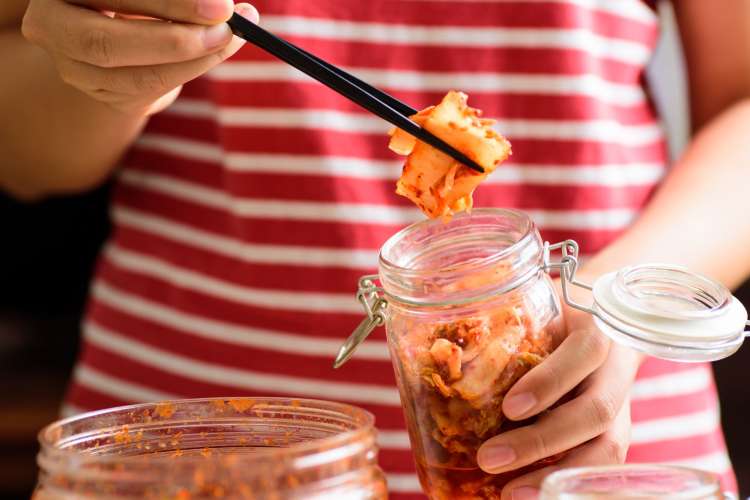
More Ways To Eat Kimchi
Although it is frequently enjoyed on its own or as a side dish, there are many opportunities to incorporate the distinctive flavors of kimchi into a meal, ranging from traditional to creative. Explore how the complexity of kimchi deepens and changes when cooked or paired with other flavors and textures by trying some of these different ways to eat kimchi:
- Kimchi-jjigae (kimchi stew)
- Bibimbap
- Kimchi bokkeumbap (kimchi fried rice)
- Kimchi buchimgae (savory kimchi pancakes)
- Kimchi mandu (kimchi dumplings)
- Bibim guksu (soba noodle salad)
- Stir-fry, noodle and rice dishes
- Korean barbecue
- Bloody marys
- Grilled cheese and other sandwiches
- Pizza
- Eggs
- Dips, spreads or dressings
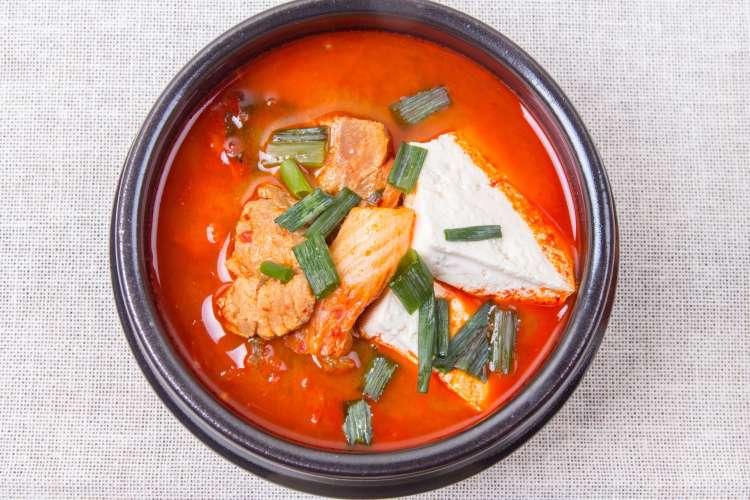
Kimchi Recipes: Dishes That Pair Well With Kimchi
Understanding what kimchi is made of, the diversity of its styles and uses and the time-honored process of making it offers a unique insight into Korean history and culture through the lens of this staple food. The ancient dish has evolved and adapted over hundreds of years and has only become more popular over time. With its nutritional benefits, distinctive taste and cultural importance, kimchi makes a wonderful addition to any cook’s culinary repertoire.
For even more fun ways to explore food, check out other experiences happening on Cozymeal.




FOOD FOR THOUGHT?
Join the conversation.